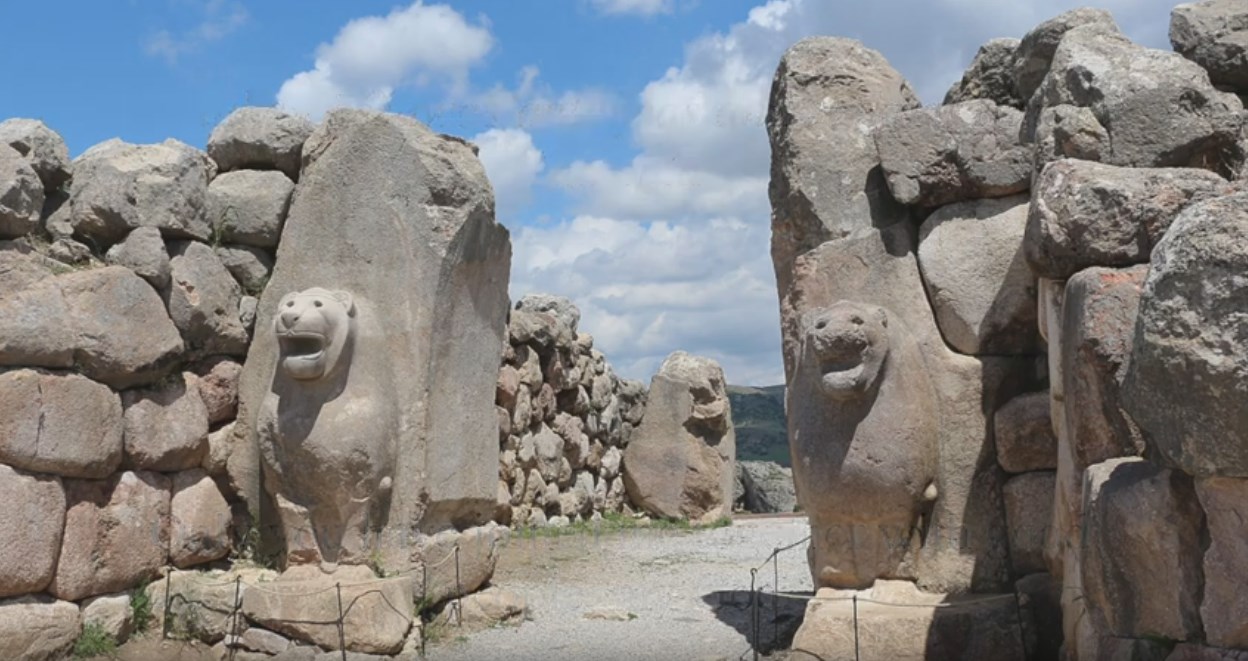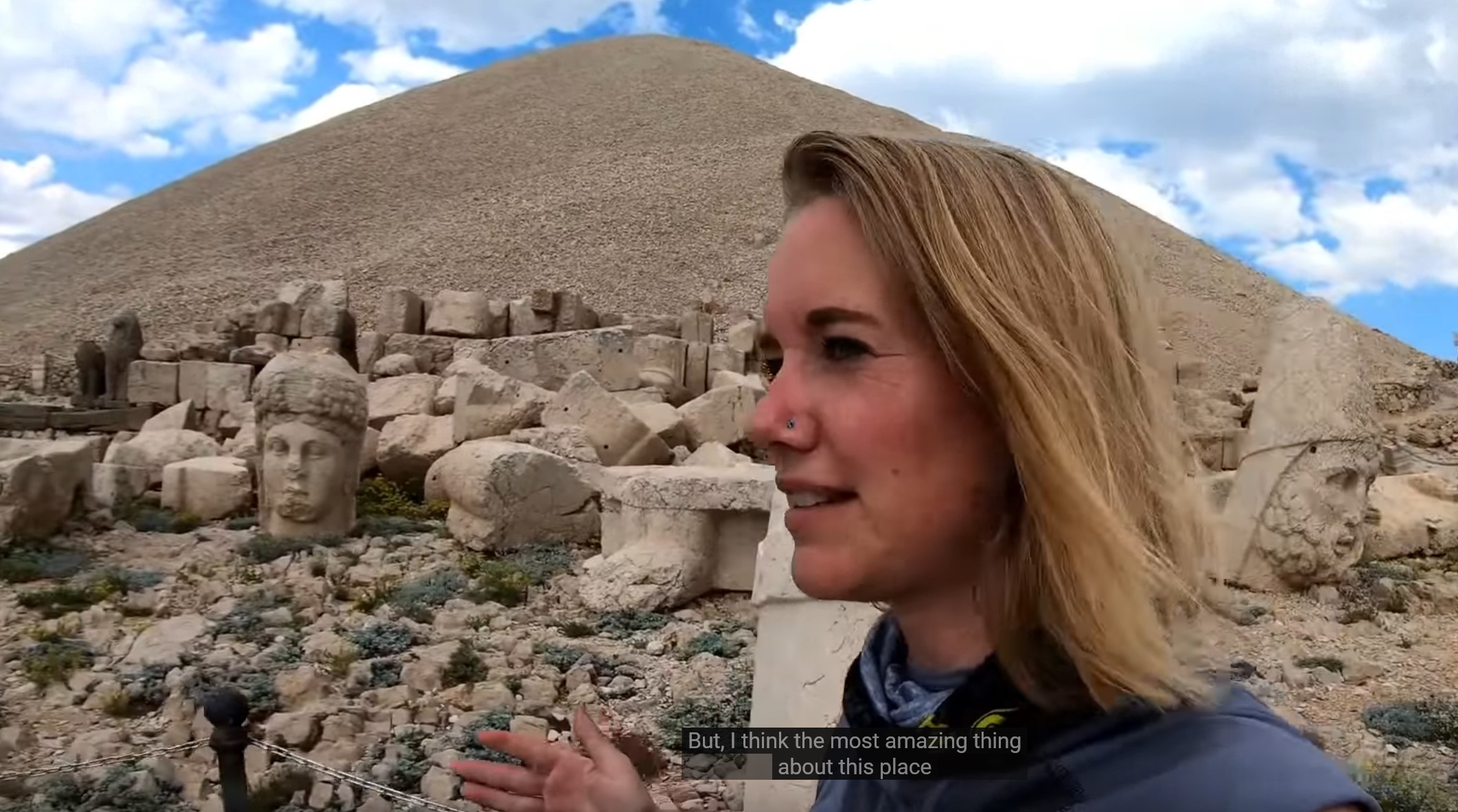
Many Europeans (Whites) do not know that the Hittites in Turkey spoke indo-European Language and the people who became the Hittites came from Europe.
The History of Anatolia : Every Year
Indo-European speaking tribe move out of Europe into Anatolia in Turkey (Asia Minor) and they become known as the Hittites. The Hittites aren't generally called the Hittites in Near Eastern scholarship anymore; they tend to get called the Hatti, since that's what most contemporary sources call them.
Hittites developed into a major political force during the Late Bronze Age, although their very existence was forgotten until the late 19th century.
"It is generally assumed that the Hittites entered Anatolia some time before 2000 B.C. While their earlier location is disputed, there has been strong evidence for more than a century that the home of the Indo-Europeans in the fourth and third millennia was in what is now southern Russia and the Ukraine. The Hittites and other member of the "Anatolian" language-speaking family, then, came from the north, possibly along the Caspian Sea but perhaps more likely via the Balkans. The dominant inhabitants in central Anatolia at the time were the Hatti (from whom the word "Hittite" was later derived). There were also Assyrian colonies in the country; it was from these that the Hittites adopted cuneiform script."
The majority of languages spoken in Europe including the Greek language are related to the Indo-European language and the Greek language is related the Anatolian Hittite language.
Anatolian languages
From Wikipedia, the free encyclopaedia
"The Anatolian languages are an extinct family of Indo-European languages that were spoken in Asia Minor (ancient Anatolia), the best attested of them being the Hittite language."
This video about Hittite Indo European descendants and culture.
E01 - Sumerian Descendants - Jaw Dropping Origins - New Hittites Documentary Mini-Series 2018
Hittite History
This is the story of THE HITTITES, the most powerful people in the ancient Near and Middle East. Narrated by Academy Award Winner Jeremy Irons, THE HITTITES, brings the fascinating history of this mighty empire to life with expert interviews, stunning cinematography and visual effects, including a breathtaking recreation of the Battle of Kadesh between the Hittite armies.
Hittites in Greece?
Hittites in Greece? | Alternate History Discussion
The Hittite Indo-European Language
Theo van den Hout is Professor of Hittite and Anatolian Languages in the Department of Near Eastern Languages and Civilizations at the University of Chicago.
Lecture by Theo van den Hout: A is for Anatolia. Writing and Literacy in the Hittite Kingdom
Kurdish Luvian-Hittite hieroglyphics/Language
The Luwians: A Lost Civilization Comes Back to Life
The Luwian speaking peoples and the Hittites were Indo-European cultures. Nothing at all to do with the Turks who came much, much later.
Speaking Hittite Language
The Sound of the Hittite Language (Prayer of Kantuzili) Download
The Sound of the Proto Indo Hittite Language (A Short Story)
The background is the Lion Gate of Hattusa, from Wikimedia Commons.
Hittite Prayer to God
The Prayer of Kantuzili (CTH 373) in the original Hittite language. This text is the oldest I've recorded so far - it dates back to the early 14th century BC! A more detailed...
The Prayer of Kantuzili in Hittite
Hittites and Troy
In Search of the Trojan War is a 1985 6-part British TV documentary series written and presented by Michael Wood. It examines the extent to which historical and archaeological evidence matches with the tale of the Trojan War as recounted by Homer in The Iliad.
In search of the Trojan war - Empire of the Hittites (5/6)
1173BC the Year Civilization Collapsed
The Trojan War: Hittite Literary Evidence For Troy (Lecture 7)
Archaeology and the Trojan War: In this lecture series by Eric H.Cline you will delve deep into the Trojan War between the Trojans and the Greeks while separating fact from fiction.
The Trojan War: The Hittites (Lecture 3)
Profile of Troy: Hittite-Trojan Connection | Judith Starkston
The battle of Kadesh between Hittites and Egyptians
The Battle of Kadesh, ca. 1285 BC, is the earliest military encounter that can be analysed in detail. This conflict between the Egyptian forces of Ramses II and the Hittite army of Muwatalli was celebrated as a personal victory by Ramses, but is often treated by modern scholars as an Egyptian defeat or as a stalemate.
The Battle of Kadesh: Egyptian and Hittite Perspectives
The Battle of Kadesh & the First Peace Treaty
The Battle of Kadesh: Egyptian and Hittite Perspectives
The Hittite Empire and the Battle of Kadesh | Early Civilizations | World History | Khan Academy
Hittites Warriors
The Kurdish Hittites (Hattî) Above All, Warriors
Turkish tribes invaded Anatolian (Today called Turkey).
The Turks Enter Anatolia (1016-1071)
Blame the Chinese for the Turks migrating to the Middle East and Anatolia. If the Tang Dynasty had not destroyed their Gokturk confederation perhaps Constantinople would still be Christian??
Why are people in the comments using words like "Turkish" lol. The Turks didn't even get to what we now call Turkey until about 1,000 AD. The Luwian speaking peoples and the Hittites were Indo-European cultures. Nothing at all to do with the Turks who came much, much later.
"Turks arrived from Central Asia and settled in the Anatolian basin in around the 11th century through the conquest of Seljuk Turks, mixing with the peoples of Anatolia. The region then began to transform from a predominately Greek Christian one to a Turkish Muslim society.[81] Thereafter, the Ottoman Empire came to rule much of the Balkans, the Caucasus, the Middle East (excluding Iran), and North Africa over the course of several centuries, with an advanced army and navy. The Empire lasted until the end of the First World War, when it was defeated by the Allies and partitioned. Following the successful Turkish War of Independence that ended with the Turkish national movement retaking most of the land lost to the Allies, the movement abolished the Ottoman sultanate on November 1, 1922 and proclaimed the Republic of Turkey on October 29, 1923. Not all Ottomans were Muslims and not all Ottoman Muslims were Turks, but by 1923, the majority of people living within the borders of the new Turkish republic identified as Turks."
Rick Steves' Europe travels across eastern Turkey, we'll learn when the Turks invaded the country, the percussion of Christians by Muslims, see a Silk Road palace, watch a little oil wrestling, visit the 4,000-year-old hometown of Abraham, and see how the nomadic Kurds live.
Comments below from the above video
Armenians themselves a remnant of Hittites?
العوفـي المضري 2 years ago edited
These people aren't Turkic. Look at their faces they are Anatolian native Real Turkic people look Asian while these in the videos do not. Eastern Turkey video above.
Comment: Many people in Turkey are Anatolian natives have European looks and many people have Middle Eastern looks.
Just so everyone knows, eastern Turkey is western Armenia. So what you're seeing in this video, it's all what was once a part of ancient Armenia. Visit Armenia, it's a gorgeous country.
H.V. Hilprecht(1859-1925) a Clark research professor of Assyriology and scientific director Babylonian expedition at the University of Penn. argue that the Hittite tongue is Armenian and the Hittites themselves were of Armenian stock...according to Ellis (1861) through language analysis we observe that under the names of Phrygians, Thracians, Pelasgians and Etruscans spread westward from Armenia to Italy and Elis claimed that the closest affinities of the Aryan element are the Armenians ..other historians that agree are..Hellenthal, Busgy, Brand, Wilson, Myers and Falush...
Book allied The Solution to the Hittite Question by Peter Jensen in 1893. Jensen proposed that Armenian is the closest language to the Hittite language, and Armenians themselves a remnant of Hittites. It has been dismissed by many in recent years, but his work rests on some solid foundations, such that I have read other scholars write that his thesis is not so easily dismissed. Http The book has long been out of print, but also out of copyright, so it should be freely available. Considering how important its thesis is, if anyone can help me find it and put it up, it would be a great service to researcher.
It was a much more filtered video than I was expecting. A lot of history about that region was not mentioned, but respect for at least highlighting the past about Armenians who once lived in this region from the beginning of time and acknowledging the beautiful Lake Van and the church. The hotel name, Urartu, is even an old Armenian name. Over 1.5 million Armenians were removed and killed in deserts of Syria. All the towns mentioned in the video were historically Armenian towns, now largely inhabited by Kurdish people. Churches are in ruins with no care, crosses removed off the domes.
According to Sumerians, Armenia is the place where the Gods created Man, according to the Bible one of the possible places of Haven, where God created Adam and the place where Noah gave rebirth of humankind. Armenia, Land of Creation!
The Hittites mixed with middle Eastern Caucasian and become a Caucasoid Indo-European people.
The Indo-European Hittites over time many have mixing with middle Easter Caucasian and adapted Islam and have forget their European roots.

[S1 - Eps. 106] A SURPRISE VISIT TO MOUNT NEMRUT, TURKEY

Please check the following links
Teach White Europeans About Their Ice Age Heritage

White European Racial Pride. What Race Are You ?


White History, Music, Wars, Dances and Film Archives

Whites Fight Back Against Racism & Bigotry
White Organization: Bloc & Generation Ide…
Genocide Whites & all Races
White Indigenous Rights
Promoting Large Families
Lauren Southern on South Africa: FARMLANDS (Are Whites History?)
The European Holocaust
Media Ownership: The Illusion of Choice
White Women Fighting For Our Rights & Wom…
Fighting Genocide Worldwide

White Organizations: European Community Based Organizations

Citizens Initizens Referendums ( CIR ) in Switzerland
19/12/2018H
08/03/2019A
21/8/2017



